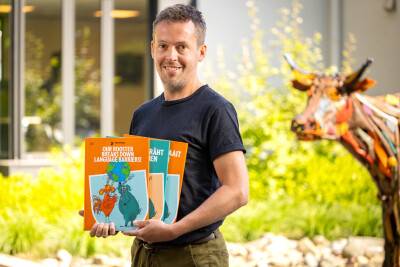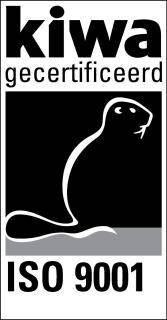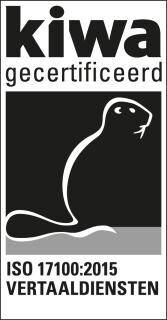
Achieving international success through social media
Every marketer knows the benefits of social media. These channels are effectively free to use, have a huge audience and ensure direct interaction with your target group and other customers. This allows you to respond quickly to their needs by using relevant content. It’s vital that you develop a clear and consistent social media strategy, so that your employees know exactly how to communicate online. This sounds easier than it is, especially if your brand is internationally active. How do you ensure optimal communication in multiple languages? How do you deal with the inevitable cultural differences? And what is the added value of a professional communication and translation agency in creating and translating multilingual content? We’ll provide you with the answers in this chapter.
1. Choose a central strategy
Consistent communication is crucial to every company’s success. That’s why you choose a recognisable house style, corporate identity and an appropriate tone of voice. This is hard enough, but using social media makes consistent communication even more challenging. Especially if you operate internationally and your branches provide their own channel content. You run the risk of quickly losing your overview. So choose a clear, central strategy, that is understood by all layers of your organisation. Pay attention to the following:
- Make sure that your marketers understand that on social media, they must stick to the company’s general brand guidelines that specifically apply to communication. Also make sure that they keep the target audience and personas in mind, respect the tone of voice, and use the house style of communication. Consistency and brand recognition are always paramount.
- Choose one central social media platform, to which you refer on all other platforms. This will prevent fragmentation of your communication. This is best achieved by creating your own platform, in the form of a blog or a community website for example. These types of self-managed channels promote brand recognition and make it easier to keep content relevant and consistent in the tangled web of the internet. To increase your reach, you must remain active on larger social media networks such as Facebook, LindedIn and Twitter, and connect them through your own platform as much as possible.
- Appoint people within your organisation who are individually responsible for social media content in different countries. This is usually someone from the (local) marketing and communications department. Ensure that all employees know who these individuals are, and how they can contact them. Make clear that only these people are allowed to post messages and create profiles on behalf of the company. Not only are these specialists the most well informed about your communication guidelines, you also prevent your social media presence from falling foul of proliferation and becoming a chaotic mess. This could lead to an unworkable situation for your own marketers, and inevitably cause consumer confusion.
- We said that you should maintain a central focus on social media content responsibility, but it doesn’t mean that you should ignore your remaining employees. On the contrary -they are the eyes and ears of your company. And are aware of what is trending on social media platforms and professional forums. Make sure to invite everyone within your international organisation to contribute their ideas and suggestions, and allow them to help, where possible, in content creation and worldwide campaigns. Benefit from their expertise and engagement with your company, while discouraging them from posting content independently.
2. Protect your reputation
The accessibility of social media is both a blessing and a curse. It’s a cheap and easy medium to use to promote your products and services to a large audience, but, as we have already seen, it takes some effort to convey a consistent message. There is something else which increases the complexity: anyone can share information in the same way on these platforms, including people outside of your organisation. Customers who share good experiences obviously provide valuable free advertising, but how do you deal with malicious competitors, dissatisfied consumers or resentful ex-employees? They can also make their voices heard on social media, and depending on their reach, can seriously damage your company’s reputation. Keep your finger on the pulse and pay close attention to what’s being said about your company on international social media. Do this by searching for hashtags and keywords, possibly by using a special search engine for social media (see point 3 below).
3. Find your target groups
For a successful multilingual social media strategy, you must know who your most important target groups are. There are various tools available which allow you to research where your brand is mentioned in different languages, and by whom. A prime example is the search engine SocialMention (www.socialmention.com), which searches user created content on more than 100 social media platforms and blogs for keywords you enter. The larger social media companies also have their own tools to gain insight into the behaviour and location of your followers and other users. Facebook has Facebook Insights, and Twitter and Google also have their own tools. Ensuring the best results sometimes comes with a hefty price tag, so you need to consider if the investment is worthwhile to your company.
You can also use information that isn’t directly related to social media, such as market research results and global sales figures of your products and services. This can also be used to define and fine tune your international and multilingual social media strategy.
4. Take cultural differences into account
When creating content for international social media channels, not only should you take the local popularity of your products into account, but also the way in which you address consumers. Don’t lose sight of specific social manners, customs and cultural differences. And remember that different platforms are more popular in some countries than in others, and some countries even have their own domestic social networks. The nature of the content is regionally defined, as are the rules you must adhere to when sharing information on social media platforms. So pay attention, make sure to have your content reviewed in advance by your legal department.
Despite these differences, there is one thing that all consumers have in common worldwide: they prefer to be spoken to in their own language. Again, it’s so important to the process to take cultural differences into account, so be conscious of the message you want to convey, and factor in search engine optimisation (SEO). It’s a good idea to work with an expert external partner, specialised in writing and translating these types of text. Professional communication and translation agencies, such as AgroLingua, have an extensive network of experienced and skilled translators and copywriters at their disposal. They can always provide content creators who are able to strike precisely the right tone for an effective and lucrative multilingual social media strategy.
Want to know more about setting up and maintaining a multilingual social media strategy? Then get in touch with the translation and localisation specialists at AgroLingua!
Back to blogs





